Tagged with 'Events'


-
Rock Star – The Impressionist Jewels of Andrew Grima
Rock Star – The Impressionist Jewels of Andrew Grima
The largest private collection of Andrew Grima jewellery to appear at auction goes on sale at Bonhams, London this autumn. In this article, we take an admiring look at his work.
Andrew Grima is recognized as one of the great modernist jewellery designers of the 20th century, perhaps the most influential post-war British jeweller.
Such was his influence that Grima jewellery remains highly prized, attracting collectors such as Marc Jacobs and Miuccia Prada, design talents who themselves have defined their generations. In this, he is the designer’s designer - one of the 20th century’s most daring and imaginative.

Image 1: Opal Boulder Pendant
Image 2: Portrait of Andrew Grima
As a result, expect to see a wave of excitement in London this September as one of the largest private collections of jewels by this extraordinary designer ever to appear at auction goes under the hammer at Bonhams.
One of a handful of designers who revolutionized British jewellery in the early 1960s, Grima didn't learn his trade at art school, being entirely self-taught and never trained at the jeweller’s bench. He considered being a pure designer to be an advantage – his imaginative ideas were never confined by technicalities or ingrained concepts of what constituted fine jewellery.

Image 1: Amethyst Earrings
Image 2: Citrine Diamond Bracelet
Grima’s groundbreaking designs, which drew inspiration from art, sculpture and the natural world, injected desperately needed originality and glamour into what had become a stagnant jewellery scene in post-war Britain. He created bold and unusual jewels whose value lay in their aesthetic composition rather than just in the carat weight of expensive diamonds and precious gems.
His journey began, appropriately, with a large cache of natural Brazilian stones - aquamarines, citrines, tourmalines and rough amethysts – that became a trademark for the young designer. Scouring the natural world for textures – bark, shell, moss – he created abstract shapes with rough stones at a scale that was distinctly different even from that of Jean Schlumberger and Fulco de Vedura, both bold and radical designers in their day.
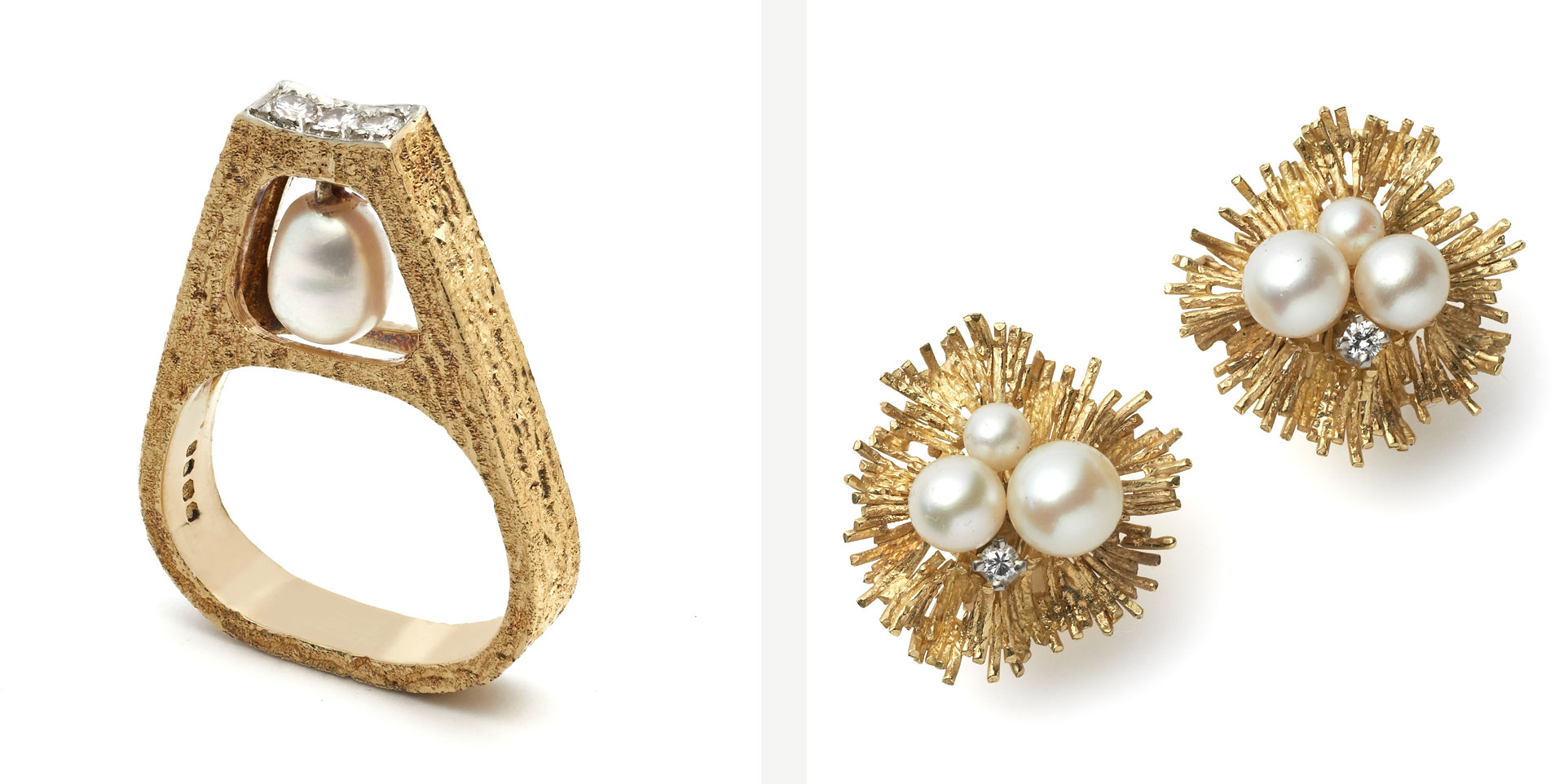
Image 1: Pearl Ring
Image 2: Pearl Earclips
He also perfected direct casts from nature in what became one of his most distinctive styles, famously capturing in gold some lichen for HM Princess Margaret, covering the results – and similar temporal fragments – with a scattering of diamonds.
The 1960s saw the charismatic Anglo-Italian emerge as the go-to society jeweller for royals, celebrities, socialites and artists and his earliest clients included HM The Queen, the Princess Margaret, Jackie Kennedy Onassis and Bond Girl Ursula Andress. He won the De Beers Diamonds International Award (the Oscars of jewellery design) a record 12 times and, in 1969, was commissioned by Omega to create one of the most outrageous and daring watch collections ever made. In 1970 he was also granted a Royal Warrant from HM The Queen.
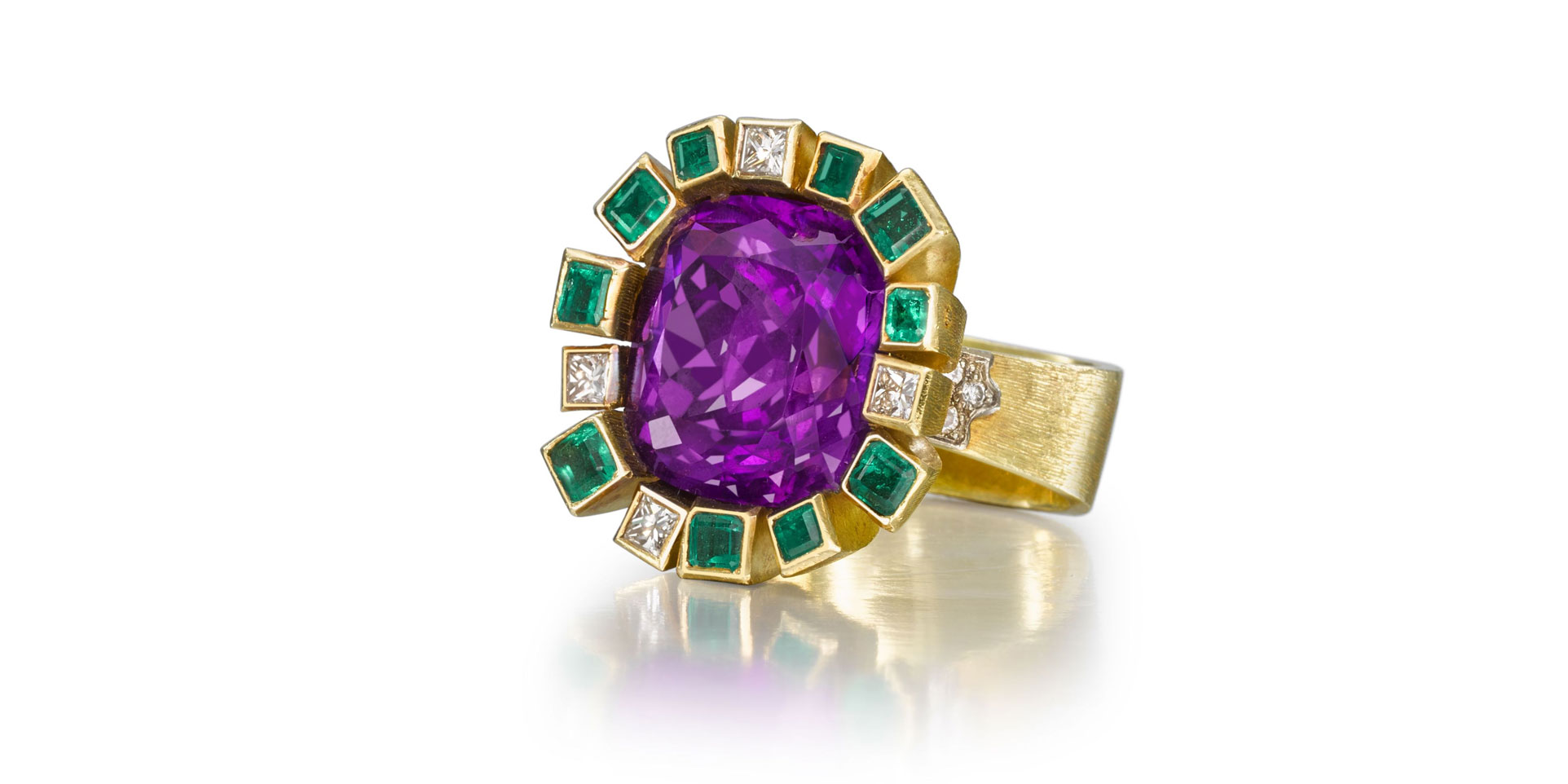
Image: Amethyst Ring
His interest in natural forms extended to a love of both opals and pearls, which featured regularly in his work. Each of the gems is defined by individual uniqueness in the way that they are formed – no one piece looks quite like another in terms of fire or, in the case of pearls, lustre and overtone.
The Bonhams sale features a gold, boulder opal and diamond pendant/necklace from 1972, alongside a selection of 55 pieces from his legendary collection for watchmaker Omega, and an additional 30 jewels, featuring his trademark palette of citrines, amethysts and aquamarines.
“Andrew Grima’s work is distinct in terms of its design, quality and originality,” says Emily Barber, Director of Bonhams Jewellery. “He was essentially an artist whose medium happened to be jewellery. His designs capture the spirit of each era in which he worked yet are still immensely wearable and contemporary today.”

Image 1: Pearl Oyster Necklace
Image 2: Pearl Earclips
The current owner of the collection, who wishes to remain anonymous, commented: “When you look at a piece of Grima jewellery you are moved by exquisite artistry in much the same way that you would be moved standing in front of a beautiful painting. In fact, for me, Andrew Grima is the great impressionist of jewellers.”
The Bonhams sale of Fine Jewellery, including a Private Collection of Jewels by Grima, will be held on 20th September 2017. Learn more about Andrew Grima, and the continuation of his work by his wife Jojo and daughter Francesca, here. -
Yanmi Lui, Winner of the Winterson Prize 2017
Yanmi Lui, Winner of the Winterson Prize 2017
Yanmi Lui was announced as the winner of the 2017 Winterson Prize for the Best Use of Pearls at Central Saint Martins, London last night, where eclectic degree collections from jewellery's future designers went on display.
The influential arts institute’s annual graduate show saw students presenting original pearl pieces, created with advice and support from Winterson Director Andrew Fraser and Creative Director Alice Cicolini.
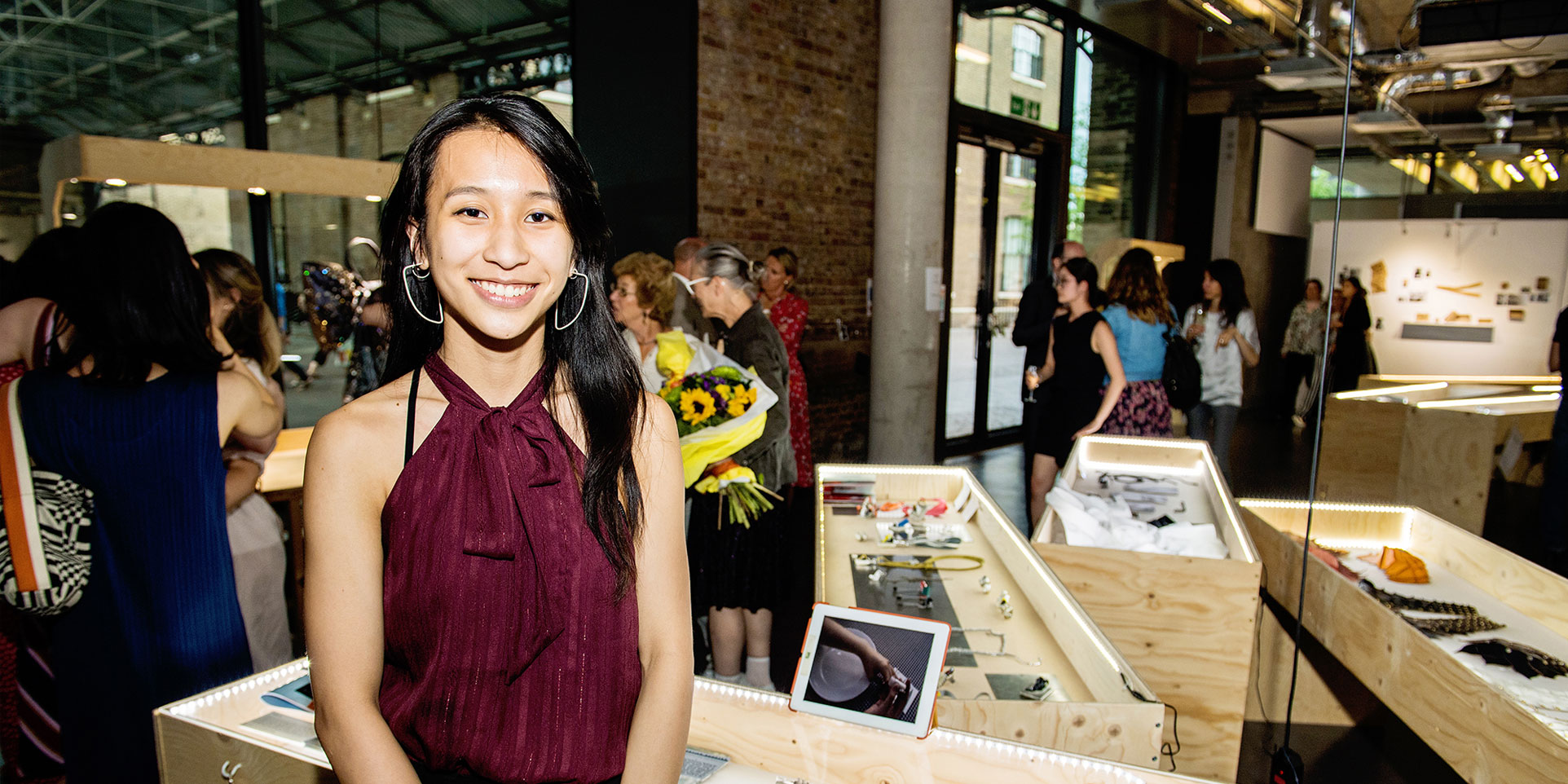
Yanmi Lui was named this year’s winner of the Winterson Pearl prize for her collection ‘Modern Self-defence Armour & Weaponry’, a playful set of self-defense weaponry that drew inspiration from bio-mimicry design and an interest in martial arts.
Each year the prize celebrates an appreciation and understanding of the qualities of the pearl. With such an original and diverse group of work this year, Yanmi was an excellent winner.
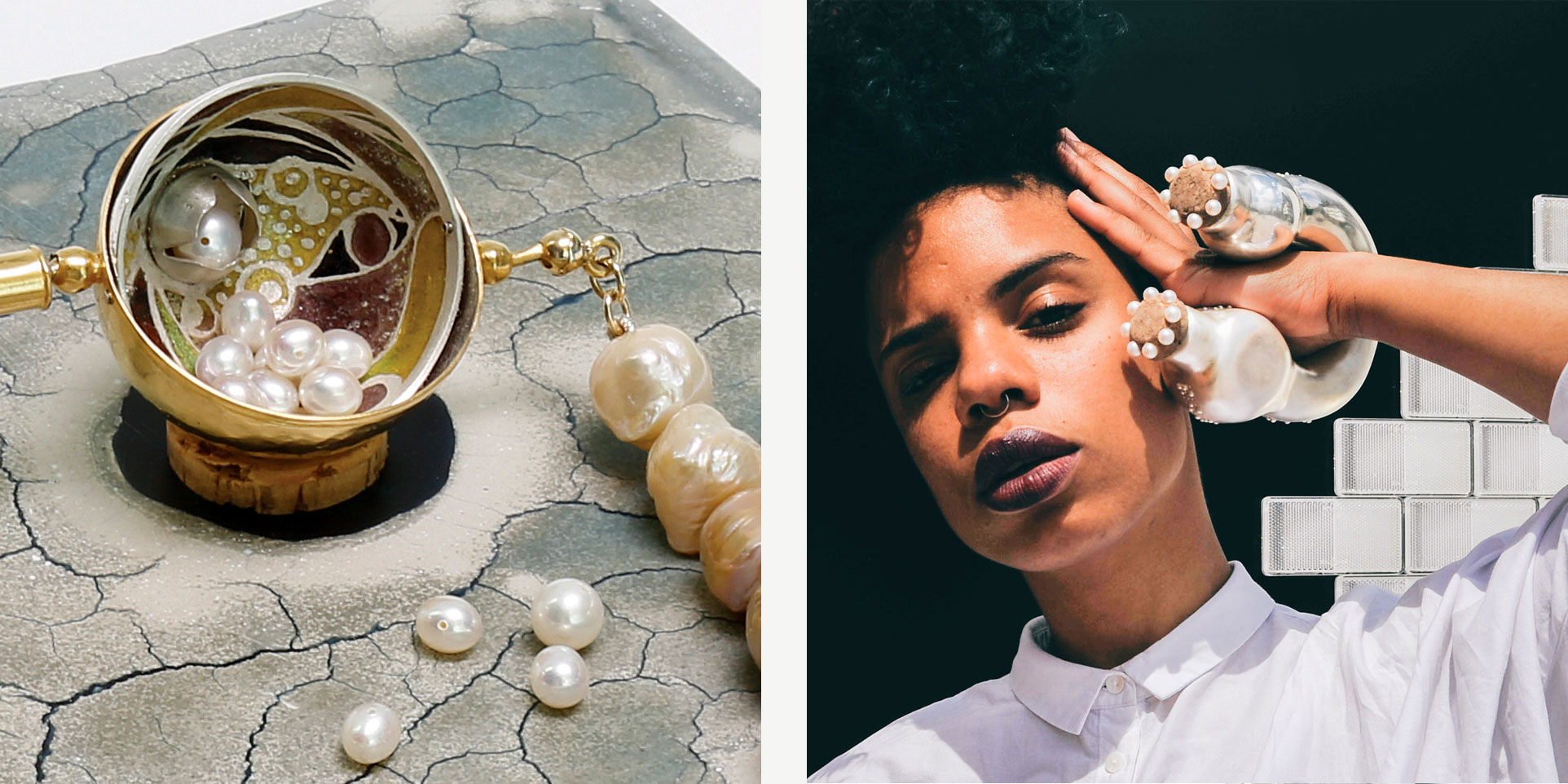
Image 1: Pearl dispenser necklace
Image 2: Bottle cuff
Yanmi described her collection to us: “My collection was inspired by the natural defense systems of animals and plants. I was already interested in the culture of martial arts and its relevance in today's modern society. I tried to mimic organic colours, functions and textures from insects and spiders in my work. The delicate and iridescent qualities of the pearl provided a perfect balance to the sharpness of the designs.”

Image: Shield
"As a designer, I continue to question, what outcomes do I want to achieve from the objects I create? What is the relationship, the interaction, between our most precious-valued objects and to wear them so close on our body? Through the process of exploring this unspoken language, I continue to develop a creative vision of what pieces I want to make and share with others. I enjoy using the artistic freedom in jewellery, aligned by functional design. It is always very delightful to see others wear my pieces, embodying it in their style and interacting with them."
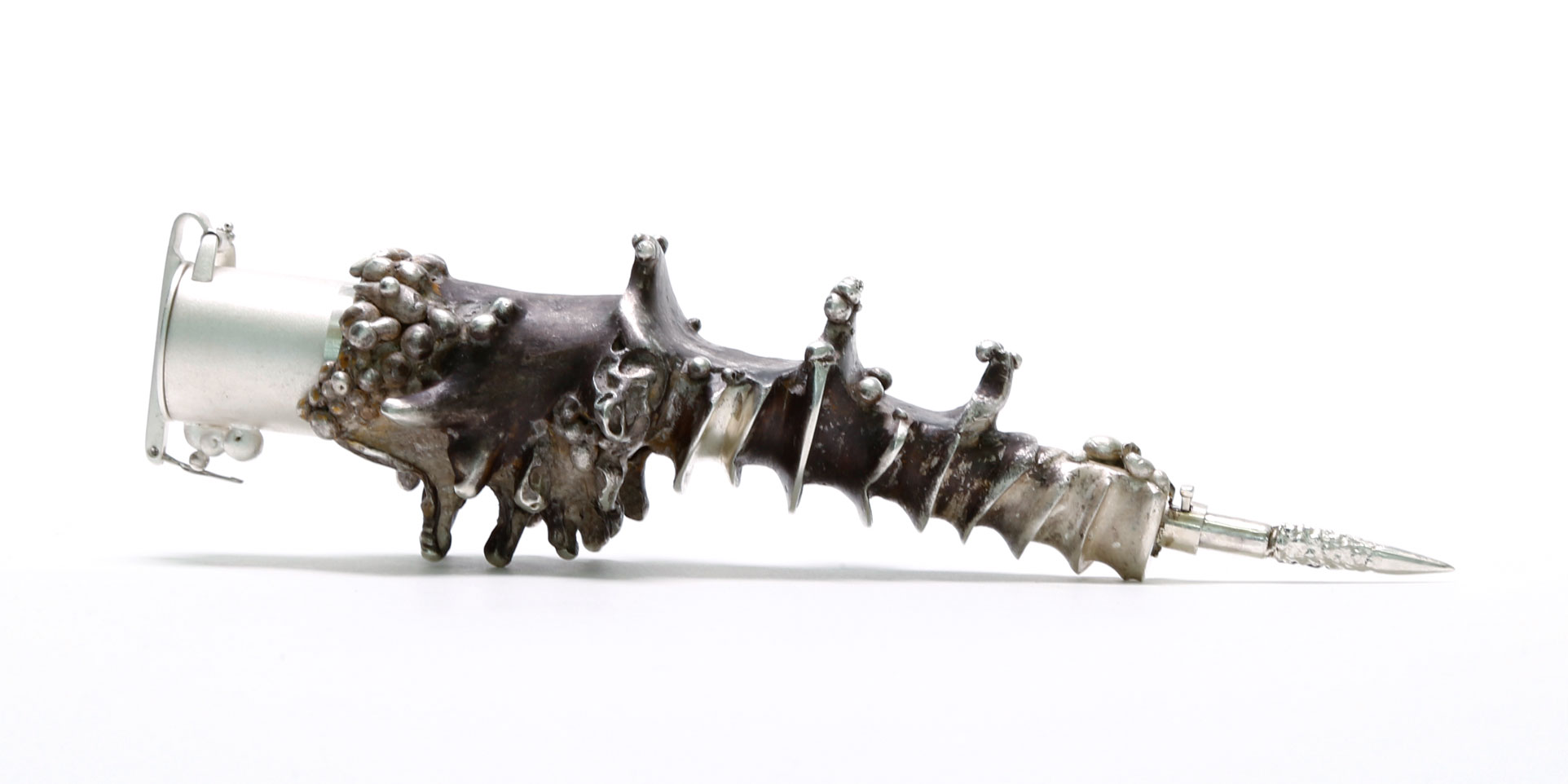
Image: Lipstick shooter
"Through studying my Bachelor degree at Central St. Martins, I learnt the importance of craftsmanship because only by trying, failing and repeating, we gain true understanding as a designer. However, my experience in working with the industry, has also taught me the importance of mass manufacturing being essential to provide for a larger community. I enjoy introducing a craft dimension to functional, usually industrialized objects, for example, the lipstick piece in my graduate collection. My future plan is to gain more understanding of three-dimensional applied technologies on a Masters level, so that I can bridge the gap between the designer and maker."
Pearl blowguns, an eyeball necklace with a dispensing system for pearls, geometric knuckle rings, kevlar shields and an over-sized pearl bottle cuff with Braille lettering formed some of the equipment and hidden details in the collection.
Caroline Broadhead, BA jewellery Design Course Leader commented "Using pearls as a weapon for self-defense is a cunning idea. Yanmi’s collection of jewellery and objects is imaginative and inventive."
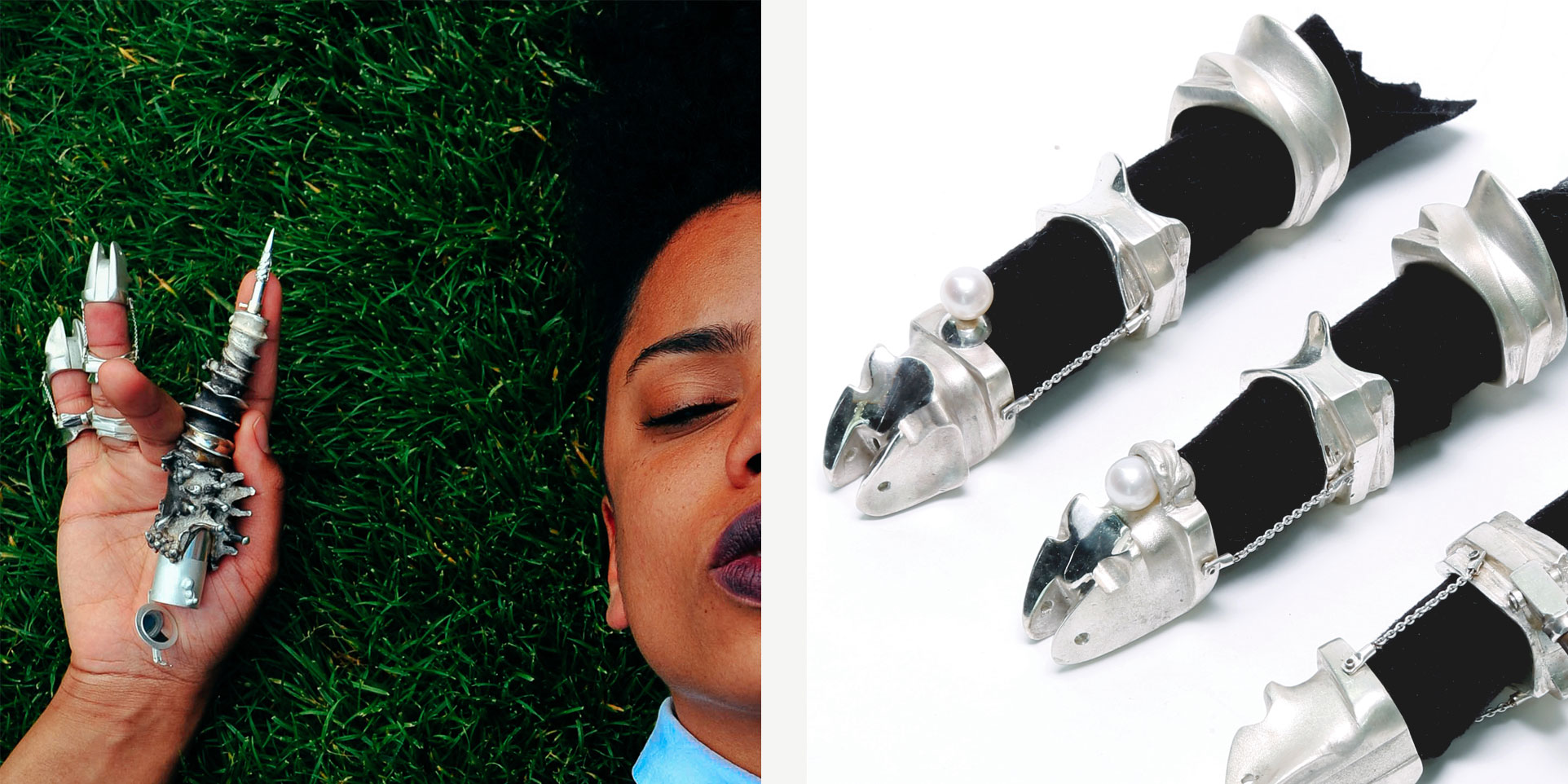
Image 1: Knuckle rings and Lipstick shooter
Image 2: Utility rings
Commenting on the award, Winterson's Creative Director Alice Cicolini said "We were impressed with the way that Yanmi made a clear conceptual connection between the origins of the pearl and her sources of inspiration. It is thought that natural pearls are created by a mollusc as a form of protection, a concept that Yanmi placed at the core of her self-defence collection. The pearl necklace is one of the most enduring luxury jewellery pieces; Yanmi plays with this symbolism, creating a fanciful piece where the pearls represent a source of empowerment as well as adornment."
An original and very well deserved winner for this year's prize, congratulations Yanmi!
Read more about Yanmi Lui and the other CSM designers' work here. -
Balenciaga: Shaping Fashion at the V&A
Balenciaga: Shaping Fashion at the V&A
Extraordinary as it may seem, the V&A’s Balenciaga: Shaping Fashion, recently opened, is the first British exhibition to focus on the work of Cristobal Balenciaga, the 20th century master of couture described by Cecil Beaton as the “Picasso” of fashion.
“Underneath all his experiments with the modern,” Beaton wrote, “Balenciaga has a deep respect for tradition and a pure classic line.” It was Beaton who acquired what is now Britain’s largest collection of Balenciaga couture for the V&A in the 1970s. He was one of many admirers, from protégé Hugo de Givenchy to Coco Chanel, who believed that “Balenciaga alone is a couturier in the truest sense of the word.”

Image 1: Cristóbal Balenciaga at work, Paris, 1968.
Image 2: Evening dress, Cristóbal Balenciaga, Paris, 1962.
The exhibition focuses on Balenciaga ‘s couture techniques, as well as his approach to business and his international clientele, revealing the balance that he struck between tradition and modernity. Two inspired commissions “shed new light on his exquisite craftsmanship,” says V&A curator Cassie Davies-Strodder, “and challenge some of the myths that have built up around the elusive designer.”
One is a series of life-size x-ray images by artist Nick Veasey that reveal for the first time the underpinnings of some of Balenciaga’s most famous style innovations.

Image: Balenciaga Shaping Fashion Exhibition View
Focusing on the latter part of his career, the collection presents some of his most famous shapes, many of which caused consternation at the time but have gone on to form wardrobe staples for women for generations – “the tunic, sack, ‘baby-doll’ and shift dress all remain style staples today,” says Davies-Strodder. Sketches, animated patterns, fabric samples, photographs and catwalk images accompany the garments, giving a glimpse into the couturier’s “uncompromising creativity.”
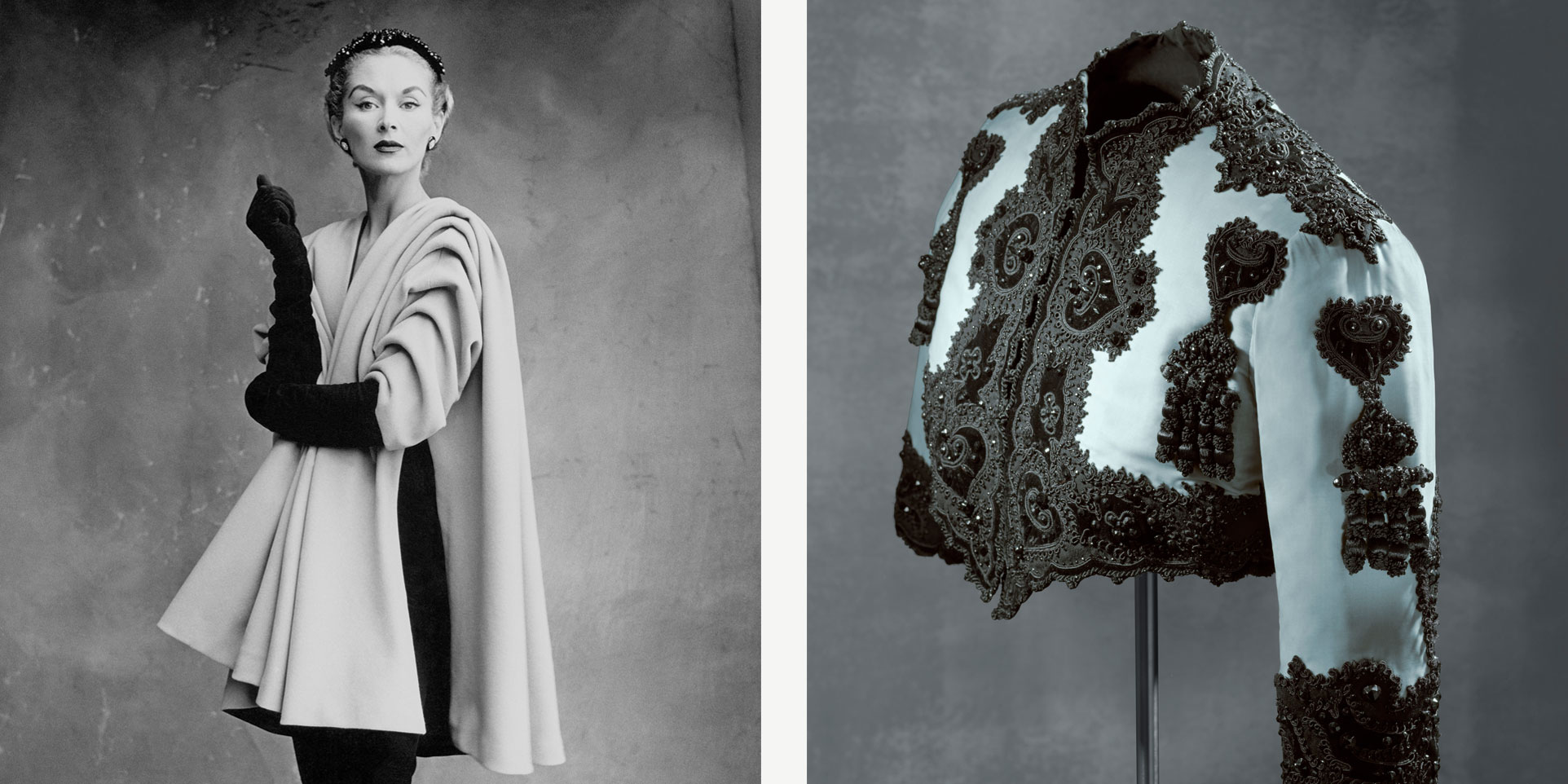
Image 1: Lisa Fonssagrives-Penn wearing coat by Cristóbal Balenciaga, Paris, 1950.
Image 2: Bolero jacket, EISA, Spain, 1947.
Alongside Veasey’s x-rays, they reveal Balenciaga to be deeply knowledgeable of his craft, inspired by sources as diverse as the structures of 18th century dress, the folds of the Roman toga and drape of the Japanese kimono. Balenciaga was able to innovate whilst at the same time using traditional boning structures, cutting techniques, metal weights and other sleight of hand to amplify the extraordinary silhouettes that had previously appeared to be created by genius alone.
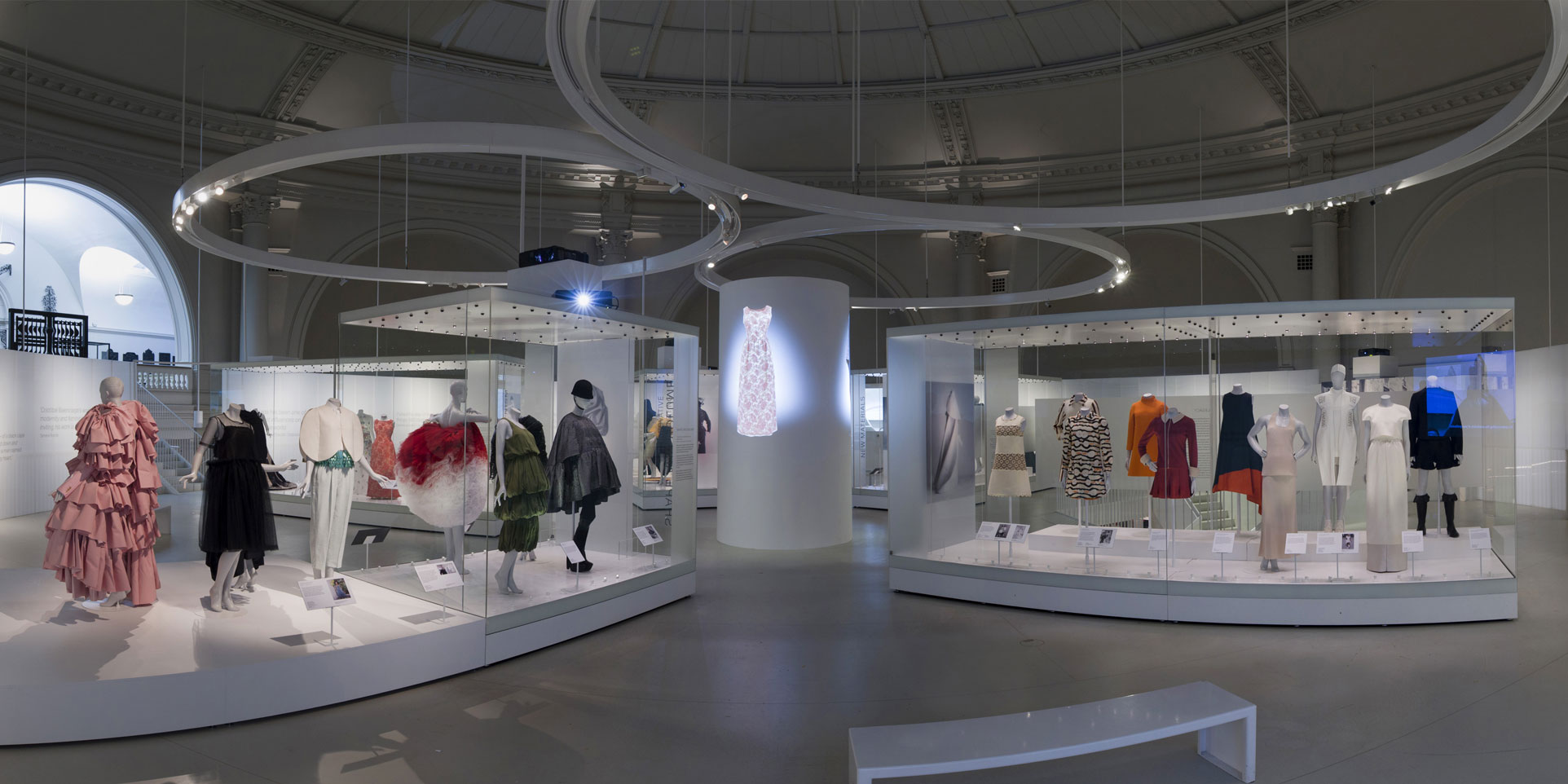
Image: Balenciaga Shaping Fashion Exhibition View
The exhibition marks the centenary of the opening of Balenciaga’s first fashion house in San Sebastian, and the 80th year since he founded his eponymous label in Paris. It opens with a series of pieces inspired by his native Spain, framing his explorations of colour, black lace, silhouette and drama as characteristically Mediterranean qualities.
Alongside his craftsmanship, it looks at the growth of the business, in particular how Balenciaga’s understanding of his client’s lives contributed to his success, inspiring key shapes and ideas. His love of the sleeve, particularly the bracelet shape and the kimono drape that became his signatures, was informed by the way these shapes helped to frame of his client’s jewellery. The standaway collar, another signature, was described as the best shape to emphasise the beauty of – of course – a string of pearls.
The exhibition runs until 18th February 2018, supported by a series of workshops and lunchtime lectures. Further details can be found on the V&A's website. -
Bejewelled Treasures from the Al Thani Collection
Bejewelled Treasures from the Al Thani Collection
Winterson's Creative Director Alice Cicolini takes a retrospective glance at the celebrated Al Thani collection of jewellery. The exhibition, which first appeared in Bejewelled Treasures at London's Victoria & Albert Museum, is set to open this Spring at the Grand Palais, Paris in March 2017.
The Al Thani Collection is a unique collection of jewels from an unusually broad chronological period that spans the Mughal period of the early 1600s to the present day. With such a diverse group of objects to select from, the V&A exhibition's curator Susan Stronge paints an impressive, if partial, picture of the development of Indian jewellery techniques and tastes.
Jewellery in Mughal society
The focus in the early part of the exhibition emphasises the almost ubiquitous presence of gemstones and jewellery throughout the Mughal court: from fly whisks and wine cups, to backscratchers and huqqa bases. The prevalence of precious and semi-precious gems led visitors to India in this period to remark on the magnificence of courtly life, its gem-encrusted thrones and imperial bodies that sparkled with jewels.
Hindu rulers lived under clear instruction as to the importance of establishing of an almost God-like regal body politic, through dress, jewellery and grooming. This remarkable profusion of jewellery, which their Mughal successors appeared to share, went far beyond the ruling classes to encompass men and women at all levels of society.

Image 1: Spinel and pearl necklace
Image 2: Silk sword sash with jewelled gold fittings
This is very revealing of the important role that jewellery played, not simply in the creation of status, but in what modern historian Daud Ali has described as “the spiritual and literary life of Indian societies” and the “association of jewels with light, virtue and beauty”. It is in early Sanskrit texts such as the arthashastra and brihatsamhita that the spiritual, cultural and healing values of stones, grading & assessment and jewellery techniques began to be established.
A love for pearls and gems
Many of these central tenets of gemlore still inform contemporary Indian jewellery making and buying practice, today with the navratna, or nine-stones, continuing to play a alismanic role in jewellery culture. Of these, the five great stones, or mahararatnani, - diamond, pearl, ruby, sapphire and emerald - dominate Indian jewellery culture as they did several hundred years ago.
As a result, for pearl lovers the Bejewelled Treasure exhibition offers a wealth of extremely fine examples. Visitors to India frequently remarked on the ropes of pearls that covered the bodies of both men and women, rulers and lesser subjects alike, upon which it would have been difficult to place a price. The arthashastra particularly notes methods for grading pearls, and the types of necklaces into which they could be strung, including one gravity-defying necklace of 1,008 rows.
It may be that one of the reasons that visitors saw pearls worn by non-royal courtiers was that, much like their British equivalents, Indian rulers charged their servants with wearing their pearls during the day to keep them both warm and luminous. Although the geographical proximity to the pearl fishers of the Arabian Gulf and Sri Lanka would have given Indian rulers greater access to pearls than some of their European peers, the pearl was still regarded a symbol of status. Some rulers were believed to drink powdered pearls as an aphrodisiac, and the Sanskrit word for pearl, manjari, means “bud” denoting the sensuality the gem has come to symbolise.

Image 1: Diamond turban jewel made for the Maharaja of Nawanagar
Image 2: Cartier Brooch set with emeralds, sapphires and diamonds
Other notable aspects of the exhibition include several exquisite examples of spinel, a stone which has long been celebrated in the subcontinent whilst remaining relatively unknown in the West. A combination of increasing scarcity, the price of tourmaline, the prevalence in the market of glass-filled and heat treated ruby and the spinel’s relatively low profile, however, marks this gemstone out as a major jewellery trend.
One of the main centerpieces of the show, and one of the few pieces in the exhibition not from the Al Thani Collection, is the Timur Ruby, rather abstractly titled since it is neither a ruby nor was it ever owned by the famous Indian ruler. Now part of the collection of Queen Elizabeth II, the stone was given to Queen Victoria by the East India Company in 1851, and then set in gold, enamel and diamonds by Garrards in 1853. The gem itself demonstrates the significant value placed on these stones by a succession of Mughal rulers, engraved as it is with the names of five royal owners from Jahangir, son of Akbar, in 1612 to Sultan Nadir in 1741.
Contrasting traditional with modern
The Timur Ruby also demonstrates the differing understanding of value that remains central to much of India’s more traditional jewellery making practice. Unlike Western cultures, where brilliance, fire and perfect precision cutting constitute extraordinary gems, the Indian subcontinent holds true (in its more traditional manifestation) to the notion that a stone’s natural character and form – its scale, luminance, colour and clarity – are what defines its beauty.
One of the main techniques that the exhibition focuses on is kundan, the practice of using highly refined gold to set natural, irregular stone shapes within fine, symmetric settings. Its aesthetic is one that has come to define traditional Indian jewellery, and its abandonment by India’s contemporary high jewellers is one of the most notable characteristics of their perceived modernity.
It is the quite clear break with traditional jewellery making practice that the exhibition makes visible, which is one of the show’s most interesting features. Alongside the rejection of traditional setting techniques, it is the widespread preference for platinum (with yellow gold removed to the reverse or interior structure of these new jewels) that has seemed to define “modernity” in contemporary Indian jewellery.
Western influences
Certainly this trend is most evident within the fertile Art Deco period that saw such a volume of commissions from Indian rulers to luxury high jewellery houses in the West such as Cartier, Boucheron, and more recently JAR, and more recently in contemporary jewellery from India itself.

Image: Gold and diamond hair ornament
Stronge implies that the increased cross-fertilisation with Western tastes has resulted in a loss of regional difference across Indian jewellery, although it's perhaps difficult to conclude about a wider trend from the prism of a very personal selection of objects. It is certainly true that the contemporary jewelers that Al Thani has favoured lean very heavily towards the language of Westernised Indian-ness that Cartier, his Indian clients, and the many other 1920s Western jewellery houses who operated in the country, helped to establish.
The exhibition catalogue relates a lovely vignette of Jacques Cartier’s first visit to India as part of the Delhi Durbar of 1911, marking the coronation of George V as Emperor of India. Cartier had brought, Stronge relates, a selection of jewellery for women, but rapidly realized “the enormous potential of this market was that the princes bought mostly for themselves”.
The legacy of the Al Thani treasures
Perhaps what makes this exhibition so unique in its presentations of high jewellery is that the majority of the pieces chosen have been created to be worn or used by men rather than women, and this in itself is something worth visiting for.
As masculine jewellery cultures diminish so dramatically across the world, the exhibition profiles a dying way of life – both that of the makers, as their traditional arts appear to fade from fashion, and the wearers, and ways of wearing, that these extraordinary gems represent. -
Coline Assade, Winner of the Winterson Prize 2016
Coline Assade, Winner of the Winterson Prize 2016
Eclectic degree collections from jewellery design’s future stars went on display at Central Saint Martins last night (June 23rd), where Coline Assade was announced as the winner of the 2016 Winterson Prize for the Best Use of Pearls.
The influential arts institute’s annual graduate show saw students presenting original pearl pieces, created with advice and support from Winterson Director Andrew Fraser and Creative Director Alice Cicolini.
Coline was named this year’s winner of the prestigious pearl prize for her collection ‘Unconventional Femininity’, an exploration of identity and self-expression. Graduate Chlóe Valorso also received a special commendation from the judges for her work.

Each year we look for work that demonstrates an understanding and appreciation of the pearl and, with such a high standard on display this year, Coline was an excellent winner.
Coline described her collection to us: “My collection was about femininity and identity. I wanted people to be more playful with their identity and make them raise questions about what is gender and who they really are. I used the pearls as playful moving parts of the jewellery. On the ring there’s a contradiction between the very round and colourful shapes, so you can choose what you want to wear and what you want to hide.”
Commenting on the award, Winterson's Creative Director Alice Cicolini said "Coline embraced the pearl and put it at the heart of her collection, celebrating the uniqueness of the baroque pearl as a symbol of feminine individuality. We were impressed by her willingness to experiment and her bold, distinctive voice."
A throughly deserving winner for this year's prize, congratulations Coline!
Read more about Coline and the other CSM designers' work here.
-
Meet the Designers for the Winterson Prize 2016 - Part III
Meet the Designers for the Winterson Prize 2016 - Part III
Each year we work with the student jewellery designers at Central Saint Martins in London, giving them an opportunity to experience designing with pearls for their final year work.
We will be awarding the Winterson Prize 2016 to one of the students for ‘The Best Use of Pearls’ at the CSM Jewellery Awards Evening on 23rd June.
The designs are also open for viewing by the public at CSM during June 22-26th.
Here we feature the final part in a series of short interviews with designers from the CSM Jewellery 2016 show, including in this article - Kay Zhixin Guo, Stacey Huang, Stephanie Chase and Tia Liang.
Read about the Winner here and the other designers in Part I and Part II of this series.
I CANNOT LAST - KAY ZHIXIN GUO

Tell us a little bit about yourself.
A Buddhist, enjoy helping people. Like simple things. Interested in how people go through difficulties in their lives, where they put their bodies and how they cope inside of it.
What was the inspiration for this collection?
My first time of experiencing break-up and depression and the doctrine of impermanence.

What have you discovered about working with pearls?
Fragile and easy to be manipulated at the same time. Can be drilled, cut and carved in specific ways. Good to combine them with different types of material or just use them straight which fits in various designs.
Which designer or artist do you most admire?
Marina Abramovic
What’s next for you after CSM?
I am going to apply for jobs and work for companies
Who could you imagine wearing your jewellery?
People who admire minimal aesthetic, matured people, both men and women.
What is it that makes a piece of jewellery a design classic?
Simply, with a highlight on special details that communicates with the viewers and wearers easily. Good craftsmenship.
STACEY HUANG

Tell us a little bit about yourself.
I’m an observer of daily life and have a full passion for jewellery design.
What was the inspiration for this collection?
My inspiration is from Tesco, to tell viewers my point of view about the promotions in supermarket by using cheap packaging as the main visual language.
What have you discovered about working with pearls?
The colour and the luster of pearls are attractive for me, and the contrast between metal and pearl is attractive as well.
Which designer or artist do you most admire?
Sebastian Errazuriz
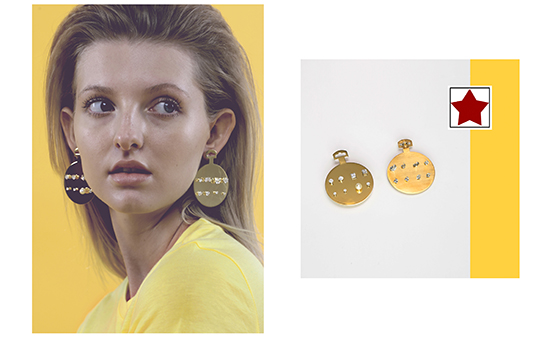
What’s next for you after CSM?
I’ll work for a company and prepare my own studio in the following 5 years.
Who could you imagine wearing your jewellery?
Every girl or lady
What is it that makes a piece of jewellery a design classic?
Delicate appearance with strong concept and high aesthetics.
View more of Stacey's work here.
MY BAKING MEMORY WITH NAN - STEPHANIE CHASE
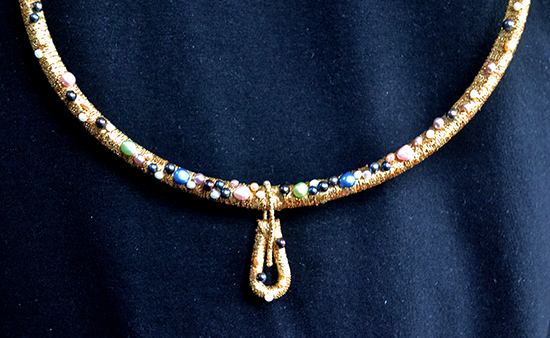
Tell us a little bit about yourself.
Well this is going to be tough haha, Okay, I am a 21 year old student that is sadly coming to the end of my studies. Out of uni I display a keen interest in music as I enjoy playing piano (that’s when I get the chance!). I also have a strong interest in photography.
What was the inspiration for this collection?
After losing my Nan I began to form a sentimental relationship with my grandmother’s objects. By studying Alice Anderson Memory Objects Memory Movement exhibition I continued to embrace this idea of preserving “mummifying” an object therefore encouraging its sentimental value.
The memory of baking with my Nan was my next step. On choosing the sieve, I wanted to preserve the memories shared with her by creating my own wrapping technique.
What have you discovered about working with pearls?
The use of pearls in my pieces symbolise the sugary cake decorations i.e. hundreds and thousands, rainbow circus mix and chocolate silver pearls. This initiates a playful side to the emotional feelings already displayed.
Working with the pearls has been wonderful, I have enjoyed using all the different colour variations that has helped me create the idea of sweets.
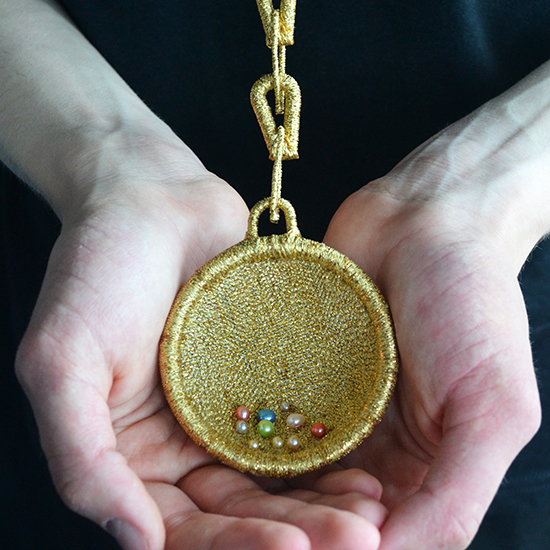
Which designer or artist do you most admire?
Alice Anderson is my biggest inspiration, however I did research many artists in my previous uni that helped me to come to the conclusion of my collection. Jo Pond’s ideas behind her jewellery piece & Caroline Broadhead and Maria Militsi’s Second hand First hand exhibtion also inspired me.
What’s next for you after CSM?
To be honest I’m not entirely sure, I would like to use the funds I raise in my degree show to build my own workshop to use at home. I have others interests as well so I might use some of the funds to build a small photography set along my own workshop after finishing uni.
Who could you imagine wearing your jewellery?
I don’t want to characterise a particular individual as that’s not my aim in this collection. My pieces display a precious effect that immediately catches the eye, I want individuals to question the meticulous wrapping method and choice of object as my pieces are for the wearers to embrace the story behind it.
What is it that makes a piece of jewellery a design classic?
The simplicity of the pieces; from only using a wrapping technique combined with the pearls gives it elegance. I have used simple combination of materials to emphasise a story that is so dear to me.
SHAME - TIANYI TIA LIANG
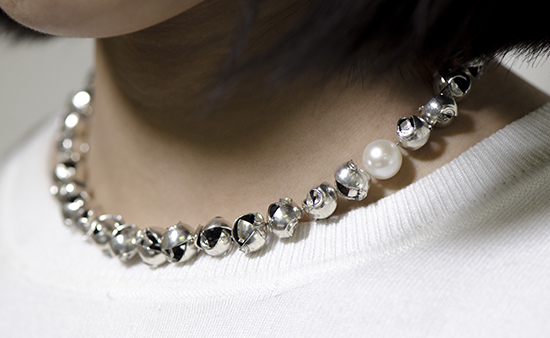
Tell us a little bit about yourself.
An active and engaged student who has an individual way of observation.
What was the inspiration for this collection?
Shame is a fact of human life. throughout the researching of history, a couple of pictures about Chinese first lady Wang Guang Mei have been attracted my attention, as the first visited foreign country First Lady of the new China, she wore a long pearl necklace as national pride.
But just one year after, because of the Cultural revolution, she suffered public humiliation and wore a heavy-looking fake pearl necklace, forcing her body to be banned in order to show her guilt.
Thus highlighted the relation between shame and pride again, also explained shame as a common topic, whatever their wealth or status.
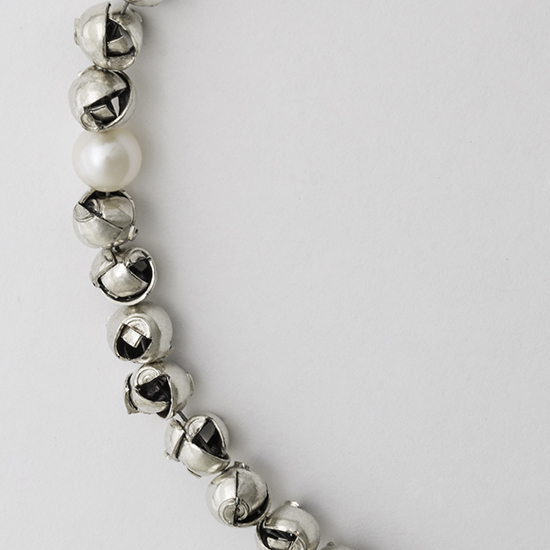
What have you discovered about working with pearls?
The sphere structure of pearls is the main discovery of my visual aim.
Which designer or artist do you most admire?
Michael Wolf
What’s next for you after CSM?
I would tidy up my mind again, then continue with master courses.
Who could you imagine wearing your jewellery?
Anyone who has incomplete reduction of interest or joy, spend much of their life blushing.
What is it that makes a piece of jewellery a design classic?
Sense.
-
Meet the Designers for the Winterson Prize 2016 - Part II
Meet the Designers for the Winterson Prize 2016 - Part II
Each year we work with the student jewellery designers at Central Saint Martins in London, giving them an opportunity to experience designing with pearls for their final year work.
We will be awarding the Winterson Prize 2016 to one of the students for ‘The Best Use of Pearls’ at the CSM Jewellery Awards Evening on 23rd June.
The designs are also open for viewing by the public at CSM during June 22-26th.
Here we feature the second in a series of short interviews with designers from the CSM Jewellery 2016 show, including in this article – Coline Assade, Haorui Wang, Jessica Trafford and Joanne YiFang Tan.
Read about the Winner here and the other designers in Part I and Part III of this series.
UNCONVENTIONAL FEMININITY - COLINE ASSADE
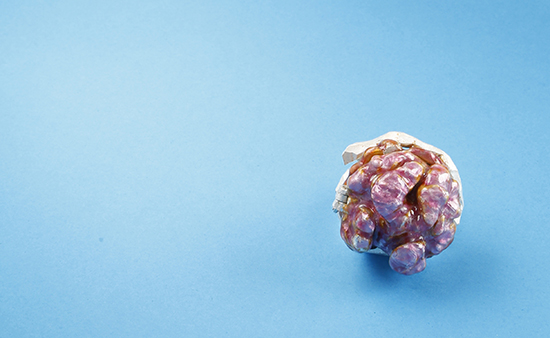
Tell us a little bit about yourself
My name is Coline and I was born in France. I am passionate about jewellery, objects and colours in general.
What was the inspiration for this collection?
The inspiration came from a jewellery supply Christmas catalogue. The double page dedicated “to her” was full of cliché objects such as pink pliers and heart pendants. It made me both laugh and cry.
From there I created a collection that aims to make the viewer question his opinion around gender and hopefully help him to be more playful with his identity and jewellery.
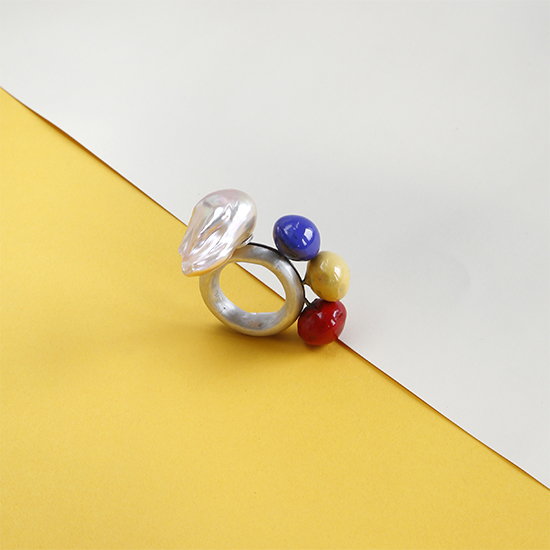
What have you discovered about working with pearls?
I never worked with pearls before this year and was astonished by the diversity of their shape and colours. I fell in love with the baroque pearls.
Which designer or artist do you most admire?
Delfina Delettrez for her bold, colourful and surrealist take on fine jewellery.
What’s next for you after CSM?
I will stay in London, look for a job in the jewellery field and try to start my own studio.
Who could you imagine wearing your jewellery?
I would love to see my jewellery worn by Jemima Kirke because I admire the way she thinks. But truly, I will be happy to see anyone wearing my work because I hope to touch as many people as possible.
What is it that makes a piece of jewellery a design classic?
I would say a timeless design and beautiful materials. But everyone has a different opinion.
View more of Coline's work here.
NATURE AND MANMADE - HAORUI WANG

Tell us a little bit about yourself.
My name is Harry Wang, I come from northern China.
What was the inspiration for this collection?
I got inspiration from the natural form of twigs.
What have you discovered about working with pearls?
I very much like pearls. Some of them have very regular shapes and very smooth surface. I try to set them into plastic. I think those two material have very similar surface. And they join together in harmony.
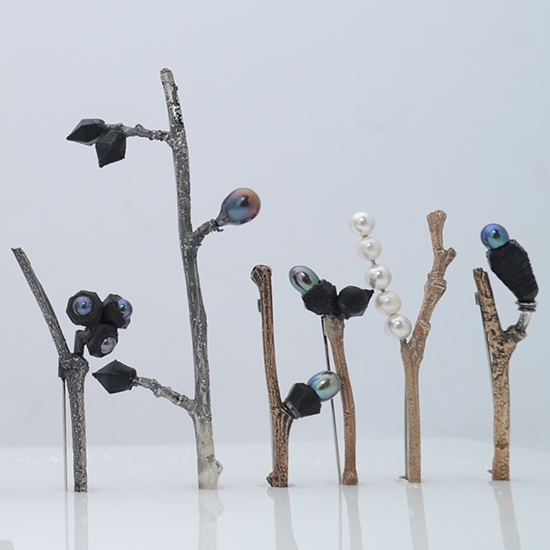
Which designer or artist do you most admire?
I admire a German artist called Geirg Dobler.
What’s next for you after CSM?
I got a place form Royal College of Art, already.
However, I have delay the place until 2017. I want to try to do some of my own designs next year and travel to some places collecting ideas.
Who could you imagine wearing your jewellery?
Asian women.
What is it that makes a piece of jewellery a design classic?
I think time is important. A classic jewellery design needs a lot time to design and redesign. A masterpiece need time to making and try to archive high quality.
Also, an idea is another foundation of a classic design. It should let people give people a feeling, it may be beautiful, it could be interesting, any kind of feeling is fine.
THE ART OF IMPERFECTION - JESSICA TRAFFORD

Tell us a little bit about yourself.
I'm originally from the Lancashire countryside but have lived in London for 5 years now. I am 26 and this is my second arts degree, my first was fine art photography. I made this change due to photography jobs becoming increasingly digital, I'm only happy when I am using my hands!
What was the inspiration for this collection?
The inspiration for this collection was the mess and chaos of traditional artists studios, and how this reflects the beauty and serendipity that can occur when working with your hands.
What have you discovered about working with pearls?
Through working with pearls in this collection – it has opened my eyes to the sheer variety of shapes, colours, and sizes within pearls, which I found really inspiring.
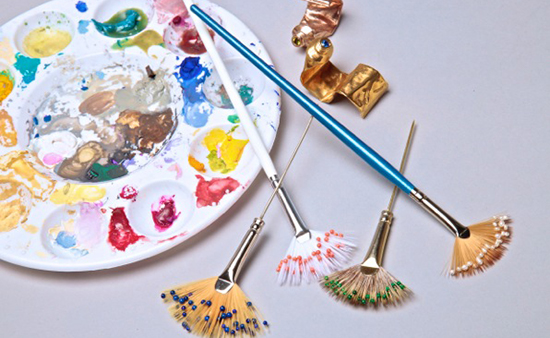
Which designer or artist do you most admire?
In regard to jewellery, I'd say I most admire designers who have a playful and eclectic approach to both material choices and concepts – such as Delfina Delettrez and Solange Azagury-Parker.
What’s next for you after CSM?
Immediately - continuing to improve my making skills and learning more about the industry – to eventually (hopefully) have my own jewellery business!
Who could you imagine wearing your jewellery?
Anybody who takes a shine to it! I think my work is quite accessible and wearable – although a little adventurous! So somebody who likes to make a statement and who also has an appreciation for the handmade.
What is it that makes a piece of jewellery a design classic?
Wearability, durability, quality, beauty.
NOT YOUR AVERAGE BEAUTY - JOANNE YIFANG TAN

Tell us a little bit about yourself.
Originated from Malaysia, I came to the London when I was 17 to further study in Arts. Prior to coming to London, I was a science student. My science background influences and inspires most of my work. I’m interested in conveying and interpreting scientific images/information in an aesthetic form.
What was the inspiration for this collection?
The collection is inspired by the growing plastic surgery culture in Asia in relation to the Asian beauty perception and standard.
What have you discovered about working with pearls?
Working with pearls, I do realise that they are more delicate compared to precious stones. The pearl requires gentle handling when setting to prevent scratches.
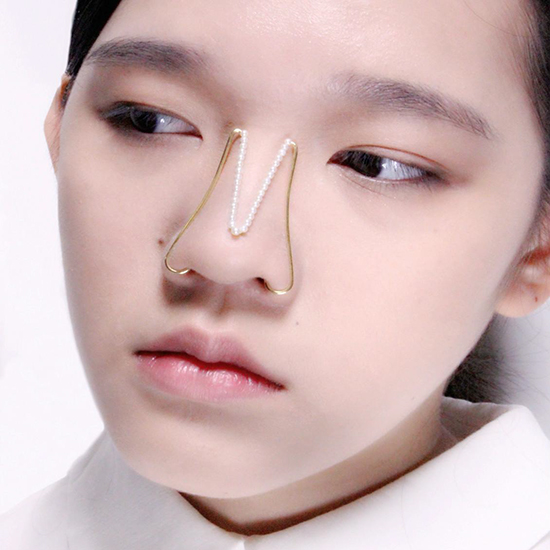
Which designer or artist do you most admire?
The designer I like most is Shaun Leane. I like how traditional craftsmanship is infused with the contemporary designs of his works.
What’s next for you after CSM?
I’m currently planning to move to Italy to further study jewellery making techniques such as stone setting. I’m hoping by gaining more knowledge on different making techniques, I will be able to further develop my ideas and designs.
Who could you imagine wearing your jewellery?
For my final collection, anyone who is into face jewellery of the avant-garde kind is welcome to wear them.
What is it that makes a piece of jewellery a design classic?
I think classic jewellery is a piece with minimal design yet it conveys a strong background story or idea. Besides, it could be worn comfortably throughout our daily life. I also think that it is important the piece is well crafted to increase the durability of the piece.
-
Meet the Designers for the Winterson Prize 2016 - Part I
Meet the Designers for the Winterson Prize 2016 - Part I
Each year we work with the student jewellery designers at Central Saint Martins in London, giving them an opportunity to experience designing with pearls for their final year work.
We will be awarding the Winterson Prize 2016 to one of the students for ‘The Best Use of Pearls’ at the CSM Jewellery Awards Evening on 23rd June.
The designs are also open for viewing by the public at CSM during June 22-26th.
Here we feature the first in a series of short interviews with designers from the CSM Jewellery 2016 show, including in this article – Ambrin Howell, Anna Finch and Chloe Valorso.
Read about the Winner here and the other designers in Part II and Part III of this series.
A COLLECTION OF CURIOUS LUXURIES - AMBRIN HOWELL
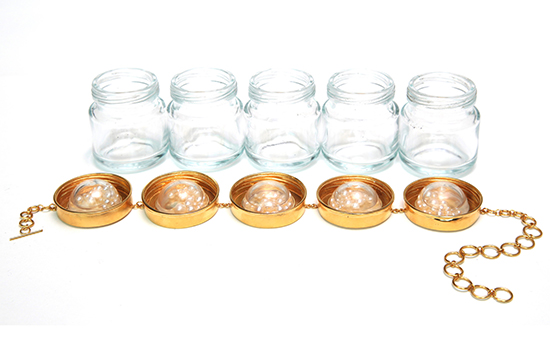
Tell us a little bit about yourself
Jewellery student from Manchester, interested in exploring themes of value, luxury, and reflecting on the society we share.
What was the inspiration for this collection
My collection aims to shed light upon trends of greed and financial injustice within British society. Over the past year I have collected British newspaper reports that show problems that stem from what I consider to be attitudes of financial corruption and greed.
In order to illustrate these stories, I have chosen relevant, everyday objects and using conventionally luxurious materials, I have transformed them into ‘luxury’ versions of themselves. I have explored how the functionality of an object may be altered or even obstructed, when transformed into a luxury version of itself. For example, how can one wind down with a nice cold pint if it has been transformed into a gemstone? And can we really rely on ‘The Morning After Pearl’?
By transforming objects in this way, I am reassessing how and why we place value, as well as reminding us that the true value of these objects does not always depend on monetary worth. Ultimately, I have created a collection of objects that belong in a parallel Britain, where material wealth and economic value are prioritized above all else.
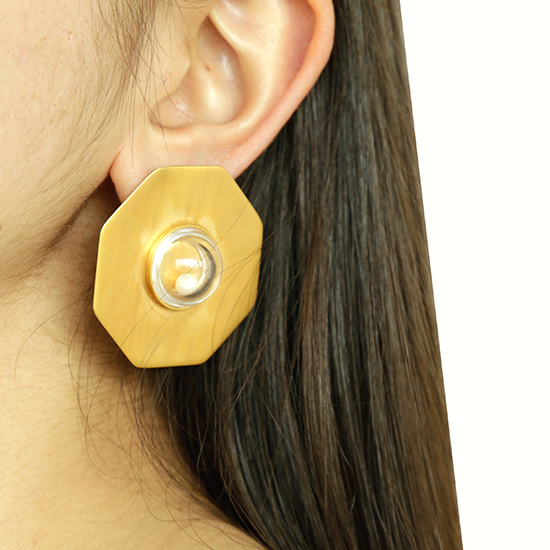
What have you discovered about working with pearls
I have discovered that I can use pearls in order to imitate ‘luxury’ versions of many different everyday objects. Be it beer froth or a piece of chewing gum! Pearls can have a real sense of playfulness and can participate as part of a wider narrative, as well as part of a precious piece of jewellery.
Which designer or artist do you most admire?
I admire the late René Lalique, for his innovative approach to designing luxury objects. I am inspired by the way he married function with opulence particularly with his perfume bottles. I also admire Banksy a great deal. I think he has a really fresh approach to creating art, that effectively communicates and reflects our society. He catches everyones attention, even those who might not normally participate in the world of art.
What’s next for you after CSM?
Long nap and then get a job within the jewellery community, whilst pursuing my own personal design interests.
Who could you imagine wearing your jewellery?
While the precious materials I have used may make my pieces exclusive in terms of ownership, I like to believe that both as pieces of jewellery and art objects, my ideas are accessible and relatable to everybody.
What is it that makes a piece of jewellery a design classic?
For me piece of jewellery becomes a classic when the ingenuity of the design and use of materials is unparalleled, and consequently becomes timeless and unique.
View more of Ambrin's work here.
QUESTIONING NOTIONS OF PRECIOUSNESS IN THE EVERYDAY: PAPER - ANNA FINCH
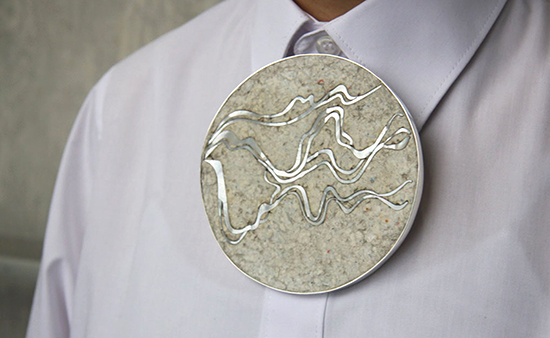
Tell us a little bit about yourself.
I am a jeweller with a key interest in the transformation of materials, especially discarded and disposable everyday materials.
What was the inspiration for this collection?
I wanted to explore how a material can be transformed from a discarded material into a material with precious connotations and value, particularly focusing on natural resources: Newspaper and receipts.
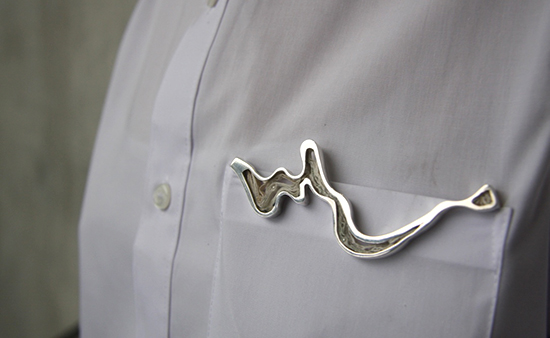
What have you discovered about working with pearls?
I discovered that the pearl almost acts as a light source brightening up the piece and drawing the eye around it. Also I learnt that the soft hue of each individual pearl aided the delicacy and beauty of the material I was creating.
Which designer or artist do you most admire?
Karl Fritsch: The way he treats all materials as equal in terms of value combining precious and non precious materials together. Commercially Polly Wales and Lily Kamper similarly explore this.
What’s next for you after CSM?
I intend to further my exploration into the transformation of materials into commercial, wearable pieces - whilst hopefully gaining experience through a brand.
Who could you imagine wearing your jewellery?
My collection could be considered non gender specific due to the placement on the white shirt. I personally see them being worn by professionals in the fashion world: the tailored trouser suit and stiletto girl.
What is it that makes a piece of jewellery a design classic?
The jewellery is timeless and not compliant to trends. It is a piece that carries its own value, portraying jewellery in a beautiful and successful way conceptually and technically.
BOB - CHLOE VALORSO

Tell us a little bit about yourself.
I consider myself as a cryptozoologist jewellery designer.
It consists of an interdisciplinary approach: Like an anthropologist, I collect objects and research extensively, I record my sketches and experimentations through various sketchbooks. I have both a methodical and imaginative approach to my work. I look at diverse disciplines such as contemporary and ancient art and artefacts, but also psychology and mythology.
As a designer I seek to unravel the mysteries and create a new meaning.
What was the inspiration for this collection?
My collection takes inspiration from aspects of existing mythologies to create my own belief system. Using my alter ego “Bob” as a recurring motif throughout my work, I explore the importance of narrative and challenge the boundaries between real and unreal.
What have you discovered about working with pearls?
I am especially interested in baroque pearls and their fascinating shapes.
In my research, I was amazed by Renaissance jewellery using pearls. I like when the pearl is at the center and the design is constructed around it to enhance its narrative qualities.
Pearls have unique natural qualities, their reflections, colours and shapes make them uncanny and special, working with them is an ongoing discovery.
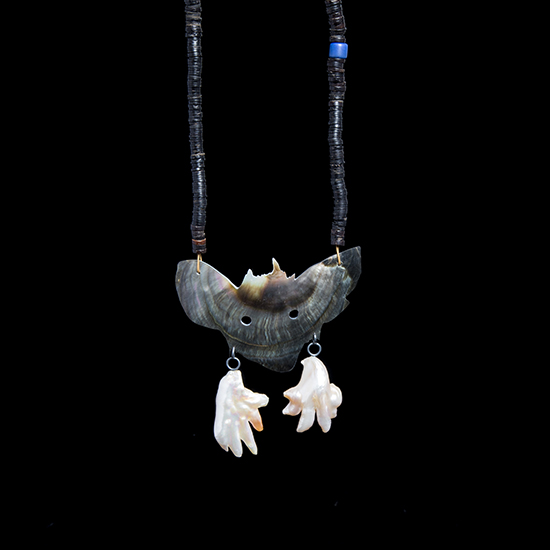
Which designer or artist do you most admire?
I like creating parallels between ancient and contemporary art. I am interested in the art of adornment in all cultures from pacific jewellery to contemporary one. I like Peter Beard's collages, Solange Azagury Partridge's colours, Mark Leckey's narrative, David Bielander's view on jewellery...
Going to exhibitions and looking at artists is an important part of my design process.
I have a thirst to discover and make connections between them.
What’s next for you after CSM?
Before continuing my studies in a master degree, I would like to do internships to collaborate, learn, open my mind. I am interested in the world of contemporary jewellery. Next August I am participating in a jewellery workshop run by Marc Monzo and from next September, I will be a resident in a contemporary gallery called Résidences in Paris.
Who could you imagine wearing your jewellery?
I see my pieces as amulets that support and empower the wearer. With my pieces, I aim to trigger an emotional response with the public.
I am intrigued to see who will wear my jewellery.
What is it that makes a piece of jewellery a design classic?
The combination of its overall qualities: its concept, its materials, its making and last, but not least, its relationship with the wearer and viewer.
I believe jewellery is one of the most interesting subject of study because of its nature: a piece of jewellery exists as an autonomous object but is also meant to be worn. It interacts with the body in a very intimate and special way. The art of adornment can be taken as one of the most ancient traditions of all culture.
I am interested in all the possibilities it carries.
View more of Chloé's work here.
-
Win The Drowned Detective And A Winterson Pearl Necklace
Win The Drowned Detective And A Winterson Pearl Necklace
A unique opportunity to win one of our stunning strands of pearls with celebrated publisher Bloomsbury.
To mark the release of The Drowned Detective, the latest book by Oscar-winning writer and novelist Neil Jordan, Bloomsbury are giving away one of our beautiful freshwater pearl necklaces to reflect the gem’s prominent role in this haunting love story.
For details of how to enter and more about The Drowned Detective, read more here.
The competition closes on 24th March. Good luck!
-
Evangeline Armstrong, Winterson Prize 2015
Evangeline Armstrong, Winterson Prize 2015
We are delighted to announce that Evangeline Armstrong is the winner of this year's Winterson Prize for the Best Use of Pearls, for a witty and playful new collection of jewellery.
For the past three years we have been supporting the students of Central Saint Martins, the influential London arts institute, with pearls and advice on working with this beautiful gem.
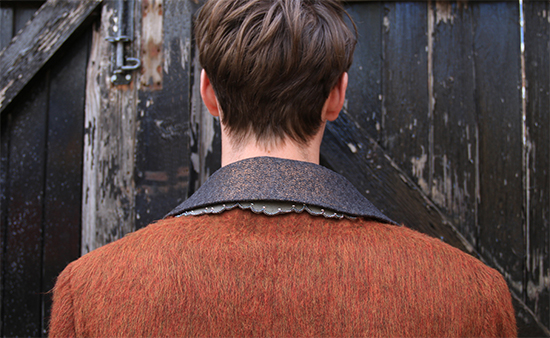
Every year a number of students choose pearls as the main focus for their degree show collection and this year’s candidates did not disappoint with their work, delivering an impressive array of imaginative design.
The result was an exciting and varied portfolio of exquisite pieces, ranging from the classic through to the more avant-garde.
The annual BA Jewellery Design Awards took place on Thursday 25th June at an exclusive ceremony at Central Saint Martins, London.
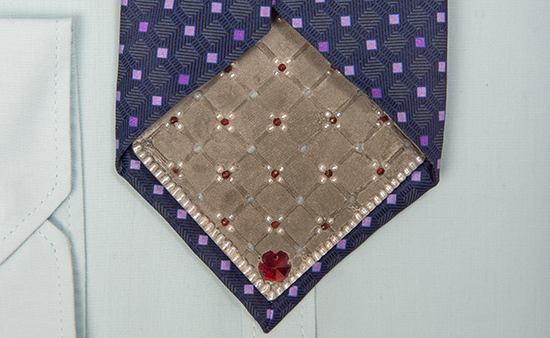
Joining Andrew Fraser from Winterson on a panel of leading jewellery design experts was Caroline Broadhead, Programme Director at CSM, Maia Adams, Director and Founder at Adorn Insight, and British jewellery designer and Creative Director of Winterson, Alice Cicolini, herself an MA graduate of Central Saint Martins.
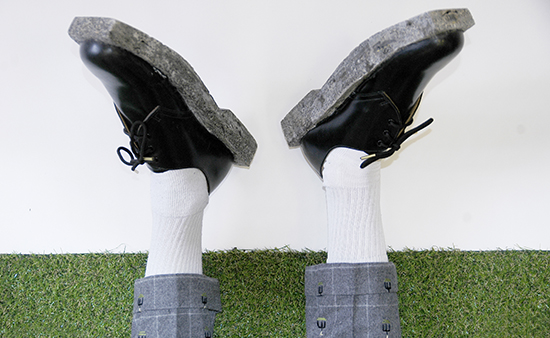
Titled ‘The Daily Grind: Secret Jewellery For the City Businessman’, we loved the modern approach taken by Evangeline. Setting classic pearls in concrete, with tailored men's fashion, fully reflected the fun and expression of the story behind the jewellery.
Commenting on the views of the judges, our Creative Director Alice Cicolini said: “We were intrigued by the whole concept of making these extremely beautiful flashes of subtle classicism appear from underneath the very conservative style of men’s shirts and suits"
A great winner for this year’s prize and congratulations to Evangeline!
Watch the video above or here. To learn more about this year's competition, read the first part in our series of interviews with Evangeline Armstrong and the students at CSM.